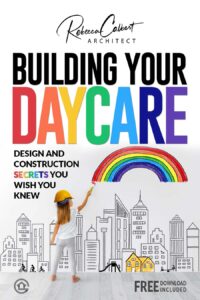As you stroll through the vibrant aisles of a toy store, it can seem like a nearly impossible task to decide which daycare toys are vital additions to your preschool classroom. This article will guide you on your journey by outlining the requisite toys that stimulate intellectual growth, fuel imaginative play, and enhance fine motor skills in young children. Kicking off with classic building blocks and winding down with interactive technology, you’ll finish feeling well-prepared to furnish your classroom with the best toys in the game.
Importance of Toys in Preschool Classrooms
Toys in a preschool classroom are not just objects of entertainment or amusement. They serve an essential role in the education and development process of young learners. The early years of a child’s life are critically formative, and the tools, surroundings, and interactions they are exposed to reverberate well into their adulthood.
Steps in cognitive development achieved via play
Playing with toys engages a child’s senses, sparks their imagination, and encourages them to interact with others. As they explore and experiment with toys, they learn various concepts such as cause and effect, problem-solving, and symbolic thinking. Furthermore, many toys enhance memory skills, help children to understand the world around them, and make abstract ideas more tangible.
Importance of play in fostering social interaction
Play isn’t all about physical activity; it’s also about social interaction. Through play, children learn how to engage with others, share, negotiate, and resolve conflicts. It prepares them for social situations, helps them understand social roles and rules, and enhances their communication skills. Mental, emotional, and social development are interconnected and toys foster this bond.
Role of toys in developing motor skills
Playing with toys offers children the opportunity to practice and enhance their gross and fine motor skills. Blocks, puzzles, arts and crafts, and many other toys require precise finger and hand movements which strengthen their motor skills, hand-eye coordination, and spatial awareness. Jump ropes, balls, and other outdoor play toys foster gross motor skills development.
Guiding Principles in Choosing Daycare Toys
Choosing the right toys for a daycare setting is a careful balance of safety, engagement, and educational potential. Here are some guiding principles that can help.
Safety considerations
Children’s safety is always the first consideration when choosing toys for a daycare. The toys should have a smooth finish, with no sharp edges or loose parts that can easily be swallowed. They should be non-toxic and should not pose any choking hazard.
Age appropriateness
Not all toys are suitable for all ages. You need to choose toys that are challenging yet appropriate for a child’s age and developmental stage. For instance, a complex puzzle might be too overwhelming for a young toddler but perfect for a preschooler.
Cognitive challenge
Toys should offer a cognitive challenge to children to stimulate learning and creativity. Think about toys that promote problem-solving, reasoning, and experimentation.
Potential for social interaction
Toys that encourage shared play promote social skills. Board games, blocks, and pretend-play sets are examples of toys that can foster interaction and cooperation among children.
Durability and easy to clean
As these toys will be used frequently by multiple children, they need to be durable and easy to clean. Opt for toys made from rugged, washable materials that can handle frequent use and the occasional spill.
Types of Toys Required in a Preschool Classroom
Let’s dive into the types of toys that are beneficial in a preschool setting.
Blocks and construction toys
Blocks provide a hands-on way to learn about shapes, sizes, and spatial relationships. They inspire creativity, promote coordination, and teach basic math concepts.
Arts and crafts materials
Arts and crafts offer a creative outlet and enhance fine motor skills, creativity, and self-expression.
Stuffed animals and dolls
These toys foster emotional development as children often use them to express their feelings and to simulate various roles and scenarios.
Role-play and pretend play toys
Role-play toys like cookware, doctor’s kits, or pretend stores foster creativity, language development, and social skills.
Active toys for physical development
Items such as balls, hoops, or jump ropes promote physical activity, coordination, and gross motor skills.
Educational toys and games
Puzzles, shape-sorters, and board games are educational toys that engage children in problem-solving and cognitive development.
Musical instruments
They boost auditory skills, rhythm, and coordination and provides children with a creative outlet for self-expression.
Books and storytelling aids
Reading and storytelling promote language development, comprehension skills, and a love for reading.
Fine motor skill toys
Toys like puzzles, lacing cards, or bead threading sets improve fine motor skills and hand-eye coordination.
Sensory toys
Sensory toys like play dough, sand and water tables, or textured balls stimulate the senses and can be calming to children.
How to Determine the Quantity of Toys
Having an appropriate number and variety of toys is crucial in a preschool setting. Too few can lead to disputes and lack of engagement, while too many can be overwhelming.
Factors affecting the number of toys required
The number of toys required in a classroom depends on several factors: the size of the class, the age of the children, and the diversity of the activities planned.
Balancing variety and abundance
It’s essential to balance the need for variety against the need for abundance. You want a wide range of toys to cater to different interests and developmental needs, but you also need enough toys to avoid conflicts.
Dealing with shared and individual toys
To foster sharing and cooperation, most toys in a preschool setting should be shared. However, it’s also beneficial to have a few toys assigned to each child to promote a sense of personal responsibility and respect for one’s possessions.
Organizing Toys in the Classroom
An organized, well-kept play environment is not just visually pleasing but also conducive to learning. Knowing where everything is encourages independence, responsibility, and promotes better focus and engagement among children.
Creating a pleasant and conducive play environment
Establish dedicated areas for different types of play and activities. For instance, a reading corner, a building and construction area, a pretend-play zone, etc. This way, the children know where they need to go for specific activities or play ideas.
Categorizing toys by type and complexity
Organize toys by type and complexity. This will not only make clean-up easier but also help the children decide what they want to play with.
Making toys accessible to the children
Keep toys within reach of the children, encouraging them to play, explore, and also learn to put things away once they’re done.
Hygiene and Safety Aspects of Daycare Toys
Ensuring cleanliness and safety of the toys used in a daycare is of paramount importance. This can reduce the spread of illnesses and prevent accidents.
Regular maintenance and cleaning
Toys should be regularly checked for damage and cleaned to remove dirt and germs. Soft toys can be machine washed, while plastic ones can be washed with mild soap and water.
Checking for broken or hazardous toys
Regularly inspect toys for any breakages or potential dangers such as sharp edges or loose parts.
Teaching children about safety measures and cleanliness
Encourage children to handle toys gently, and to put them away after playing. Teaching them to wash their hands before and after play can help inhibit the spread of germs.
Role of Teachers in Guiding Play
Though children’s play may seem spontaneous and self-guided, teacher’s involvement is crucial in maximizing the learning potential of play.
Introducing new toys or games
Teachers play an essential role in introducing new toys or games, explaining their use, and guiding children on how to play with them.
Facilitating interactive play
During group play, teachers step in as facilitors, encouraging interaction, reinforcing cooperative behavior, and subtly steering the play in a way that learning objectives are met.
Observing and assessing children’s spontaneity and creativity
By observing play, teachers can gain insights into a child’s development, their interests, skills, and the areas where they might need additional support.
Role of Parents in Toy Selection
Parents play a significant part in toy selection. They know their child’s interests, strengths, and areas of need the best.
Understanding child’s preferences
Parents can help identify toys that will entice their child’s interest, thus promoting greater engagement and learning.
Supporting educational goals with toys
Parents can supplement the educational objectives of the preschool by providing similar, complementary toys at home.
Aligning toys with child’s developmental stage
Parents need to ensure that the toys their children play with are suitable for their age and development, challenging them but not frustrating them.
Providing a Balance of Free Play and Structured Play
While free play nurtures creativity and self-guided exploration, structured play aids in specific skill acquisition and meeting learning objectives.
Using toys to facilitate structured play
Toys can be used to conduct guided activities that are designed to teach specific skills or concepts.
Encouraging imaginative and creative free play
Give children the space to use toys according to their imagination and creativity, rather than imposing rules or directions.
Balancing different types of play for overall development
Striking a balance between free play and structured play ensures holistic development – intellectual, physical, and social-emotional.
Assessing the Effectiveness of Toys in Learning
Assessment is not just for children’s learning but also for the effectiveness of the toys being used.
Observing children’s enthusiasm and interest
A high level of interest and enthusiasm is a good indication that a toy is engaging and fulfilling the child’s play needs.
Noticing progress in specific skills
If a child shows progress in certain skills after using a particular toy or game, it implies that this toy is effective in facilitating learning in that area.
Soliciting feedback from children about their favorite toys
Children can also provide valuable feedback through their preferences, giving insights about what works for them and what doesn’t.
In conclusion, toys in a preschool classroom are powerful learning tools that stimulate a child’s imagination, facilitate development, and provide an enjoyable way to acquire new skills. By considering safety, age appropriateness, potential for interaction, and educational value, you can create an engaging and enriching environment for play and learning.


